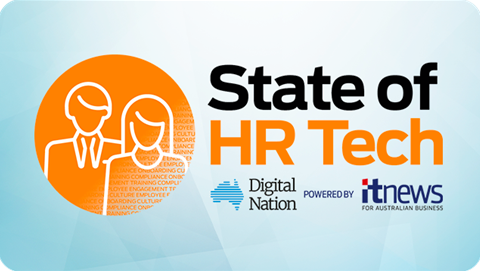With remote working and a digital shift accelerated by the pandemic, companies like Bain, McKinsey and Company, and BCG, along with the World Economic Forum are examining what the future of work might look like. The bottom line — it's a hybrid world that workers prefer, but it comes with a cost.

Much research surrounding hybrid work environments has touted the benefits, however, it is not without drawbacks.
We examined research from four different organisations to better understand the factors going into the future of work.
It’s an issue that has been exercising the mind of Macquarie Group CEO Shemara Wikramanayake who spoke at Lendlease’s Autonomous 21 conference last month.
“People do like to be together, and they will want to come back to cities. What we don't know because we've only really had a year and a bit of it, is what we may have lost in terms of people not physically engaging,” she said.
“Flexibility, I think will be here to stay and people will be much more empowered in terms of how they deliver,” said Wirkamanayake.
“This pandemic has been quite seminal in terms of new things we've discovered, and in terms of how we can deliver value.”
BCG: Expectation Gap, Mental health
According to BCG research, there is an expectation gap between employees and employers in the future of hybrid workplaces.
While almost two-thirds of employees want a hybrid working model, employers believe this will happen for only 40 per cent of applicable employees.
Further evidence of this division is seen between workplaces embracing newer, more flexible models and ones resistant to the change.
“Employers think, on average, a third of their employees (that can work remotely) will be back in the office five days a week,” the authors say.
“But only 15 per cent of employees say they want this. Interestingly, employers also believe that 27 per cent of their people will work in fully remote models, although only 21 per cent of employees actually want to work in this way.”
The BCG paper by Chris Mattey, Rebecca Russell, Nicole Sibilio, and Dan Wong which was published late last year suggested that the focus on employee interaction in the midst of rising mental health concerns is only being addressed by one-third of companies.
Outlined in the article “The Expectation Gap in the Future of Work”, struggles with mental health challenges associated with the shift to remote work has affected 15-20 per cent of employees.
Listed as primary causes of the mental health challenges were decreasing income and job security, declining motivation and blurred lines between work and home.
Rethinking of traditional office spaces and the function of the office is recommended by the authors to navigate the shift back from the pandemic.
“Employers would be wise to pay attention to how employees view the office. As the world moves to a more hybrid working model, there is an opportunity for employers to repurpose office space, and how it functions, to reflect new needs and to create opportunities for interaction and collaboration,” the authors said.
WeForum: Disadvantages
The shift to a hybrid work environment has other disadvantages, however, with remote working limiting valuable relationships at work, according to an article “Remote working - does it make us more or less productive?” by Sean Fleming writing for the World Economic Forum — WeForum.
The article cites a report by ADP Research that says on-site employees enjoy crucial advantages over remote working counterparts.
These advantages come from increased social interaction and clearer boundaries between home and work.
“More spontaneous conversations, stronger feelings of connection and receiving constructive feedback are all areas where on-site workers gave more positive responses than those who work at home,” the authors say.
According to the ADP research, 70 per cent, of on-site workers say that they have a strong feeling of connection with their teammates, an increase of six per cent.
The same research contained a study of over 30,000 US employees, revealing that one day per week spent working from home could boost productivity by 4.8 percent, with the subtraction of the commute being largely responsible.
The benefits of utilising the hybrid model, particularly in the area of employee well-being is outlined. 67 per cent of hybrid workers, compared to 49 per cent of on-site workers, feel more visible and that their growth is being supported by their manager. Similarly, 72 per cent of hybrid workers said they received constructive feedback about their work, compared to 57 per cent for on-site employees.
“Ensuring employee well-being is among the key measures undertaken by business leaders looking to effectively shift to remote work,” authors of the cited World Economic Forum’s Future of Jobs Report 2020 write.
“In particular, 34 per cent of leaders report that they are taking steps to create a sense of community among employees online and looking to tackle the well-being challenges posed by the shift to remote work.”
McKinsey Research – What workers want
An article titled “It’s time for leaders to get real about hybrid work” by Aaron De Smet, Bonnie Dowling, Mihir Mysore, and Angelika Reich for McKinsey Research reflects the changing nature of work and a preference leaning towards hybrid work by employees.
Nearly 75 per cent of global employees surveyed by the company want to work from home for two or more days per week. More than half want at least three days of remote work.
While there was demand for increased remote-working opportunities, pandemic driven fatigue, difficulty disconnecting from work and a weakening sense of belonging were also reported.
“This increase in optionality, combined with a greater disconnect between personal lives and work obligations, is driving workers to reevaluate their relationships with their employers, as well as with their work,” the authors say.
“Recent surveys found that 26 per cent of workers in the United States are already preparing to look for new employment opportunities and 40 per cent of workers globally are considering leaving their current employers by the end of the year.”
It is suggested by the authors that practices such as office space redesign, restructuring of meetings and a company-wide test-and-learn approach are adopted in order to transition to post-pandemic work.
Bain and Co — Adaptability and collaboration
This adaptability and increased agility has been embraced by companies, with collaboration platforms adaptation increased by 30 per cent according to an article titled “Now That We Know Remote Works, What’s Next?” by John Hazan, Dan Schwartz, Nate Anderson and Andriana Diez for Bain and Co.
The same research revealed that 65 per cent of surveyed employees highlighted more effective deployment of employees to critical tasks and 95 per cent expect the increased agility to carry into post-pandemic work.
“For many, remote work is here to stay. Today organisations have the historic opportunity to design the optimal distributed workforce model, the one that will get the most from employees while also helping to retain and attract great talent,” the authors say.
“Flexible working was something that would never have occurred to me. I've had a career of longer than 30 years and basically, it was getting up at the crack of dawn and going into the office, being there all day, missing dinner with the kids,” said Wikramanayake.
“I’ve found now, [across] all of our lines of business [that] we can deliver in very different ways, and get more balance into our lives with people spending time on what matters.”
In order to make a smooth transition into a post-pandemic workforce, a balance will need to be achieved between employee and employer expectations, needs and business objectives.


.png&h=140&w=231&c=1&s=0)







 iTnews Executive Retreat - Security Leaders Edition
iTnews Executive Retreat - Security Leaders Edition












_(1).jpg&h=140&w=231&c=1&s=0)



